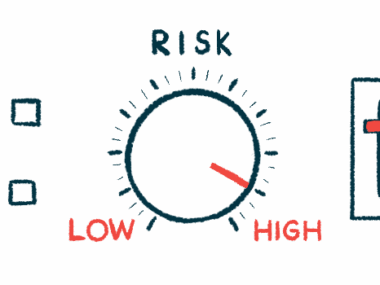ARRS found better to predict kidney failure risk in children
Identifying risk factors important to improve outcomes in AAV: Study
Written by |

The ANCA Renal Risk Score, known as the ARRS, was found to be better than standard methods at predicting the likelihood of kidney failure in children with ANCA-associated vasculitis (AAV) who have kidney inflammation, a study in China showed.
“Our findings suggest that ARRS is an independent risk factor for [kidney failure] and [shows] good performance in predicting the [kidney] outcome in children,” the researchers wrote in “Validation of a renal risk score in a cohort of children with ANCA-associated glomerulonephritis.” The study was published in The Journal of Investigative Medicine.
AAV refers to a group of autoimmune diseases characterized by inflammation and damage to small blood vessels in the body due to the presence of self-reactive antibodies called ANCAs.
Many AAV patients develop glomerulonephritis, a condition in which inflammation affects the tiny filters, called glomeruli, inside the kidneys. When this happens, the kidneys become less effective at filtering, and the condition can progress into kidney failure.
While AAV is extremely rare among children, 20% to 50% of pediatric glomerulonephritis cases progress into kidney failure. “Therefore,” the researchers wrote, “identifying risk factors for progression is of paramount importance to improve [kidney] outcomes.”
Testing methods to predict kidney failure risk in AAV children
Several systems are used to assess the severity of ANCA-associated glomerulonephritis or AAGN. These systems — among them the Berden classification and the rapidly progressive glomerulonephritis (RPGN) severity classification — use age, kidney dysfunction, and findings from kidney biopsy in their assessments.
However, some studies have shown that these systems’ predictive results differ between patient populations. They also fail to improve outcome predictions.
The ARRS, developed in 2018, was shown to predict the long-term risk of kidney failure in adult patients with AAGN.
Based on three parameters — the number of normal glomeruli, the estimated glomerular filtration rate (eGFR), and shrinkage/scarring of kidney tubules — it classifies patients as having a low, medium, or high risk of experiencing kidney failure.
eGFR measures how well the glomeruli are working to help remove waste and excess fluid from the blood.
While the ARRS is now validated in five countries, including the U.S., per researchers, its predictive value in children “needs to be verified,” the team wrote.
To that end, researchers at Nanjing University, in China, evaluated whether the ARRS was better than standard systems at predicting the long-term risk of kidney failure in a large and well-characterized group of children with AAGN.
The retrospective analysis included 61 pediatric AAV patients — 23% of them boys — with a mean age of 15.7 years. Their AAGN status was confirmed by kidney biopsy at the Clinical Center for Children’s Kidney Disease, in China, from 2007 to 2022.
All children received treatment with oral prednisolone, a glucocorticoid. In the majority of cases (83.61%), prednisolone was given in combination with cyclophosphamide or mycophenolate mofetil.
Based on the ARRS, 27 children (44.3%) were classified as having a low risk of kidney failure, while 21 (34.4%) were found to have a medium risk, and 13 (21.31%) a high risk.
ARRS more effective than standard measures as predictor
The children were followed for a median of median of 46.4 months, or nearly four years, during which 14 of them (23%) developed kidney failure, as defined by a need of dialysis for about three months or of a kidney transplant.
Kidney failure was significantly more common in the high-risk group than in the two other risk groups.
Four children died: three cases in the high-risk group and one case in medium-risk group. Interstitial pneumonia, a serious lung condition, was the cause of death in two cases and a life-threatening response to infection, known as sepsis was the cause of the other two.
A multivariate analysis, which takes into account several different variables, showed that ARRS was an independent risk factor predictor of kidney failure in children with ANCA-associated glomerulonephritis, as well as an eGFR of up to 15 mL/min/1.73 m2.
Estimated survival without kidney failure at five years was 93.3% in the low-risk group, 88.9% in those with medium risk, and 82.5% in the high-risk group. By 10 years, survival dropped to 70% among those with low risk, 71.1% for those at medium risk, and 60.2% for those with high-risk.
Kidney outcomes were significantly worse in the high-risk group compared with the other two groups, as assessed using the ARRS.
The researchers then compared the predictive value of ARRS for the likelihood of kidney failure with that of the Berden and the RPGN classification systems, as assessed by the area-under-the curve (AUC).
Essentially, AUC values, ranging from zero to one, reveal how well a predictive test performs, with one being a perfect performance, and zero meaning it is wrong every time.
The ARRS showed a significantly better predictive value for kidney failure (AUC of 0.88) than those of the Berden classification (AUC of 0.70) and RPGN (AUC of 0.69). No significant differences were seen between the Berden and the RPGN predictive values.
Overall, “ARRS exhibit better predictive value for ESKD than those of the Berden classification and RPGN classification,” the researchers wrote.







